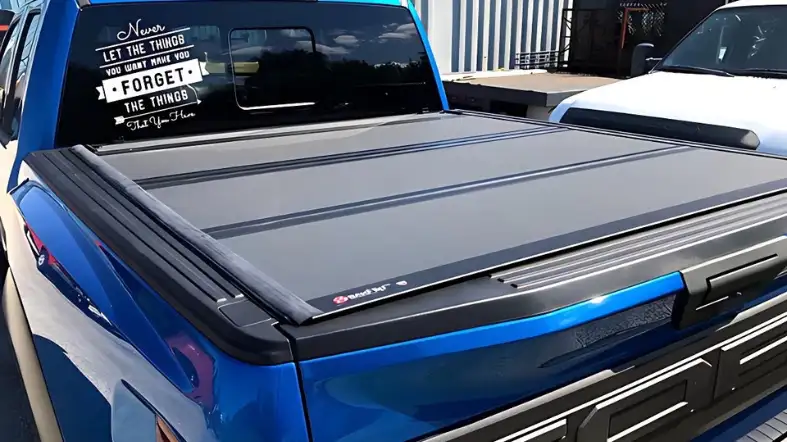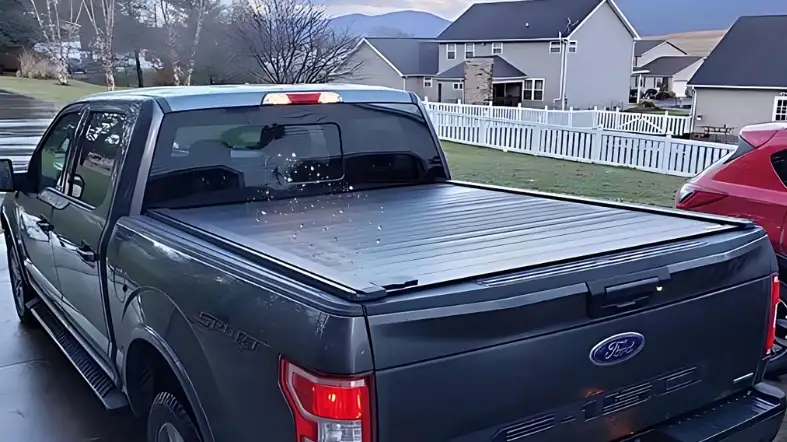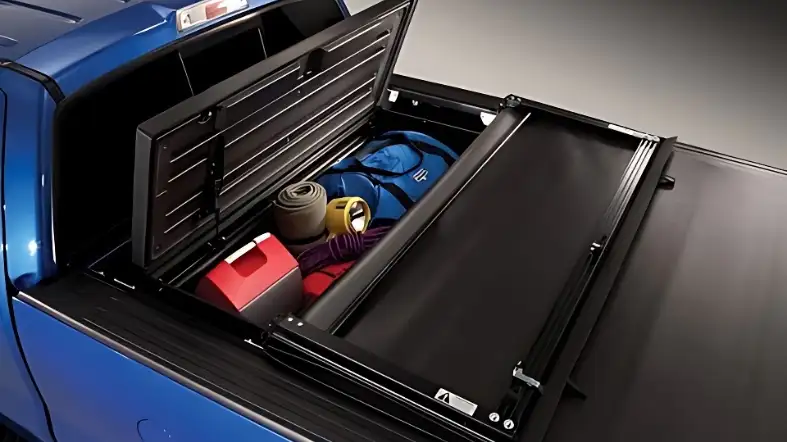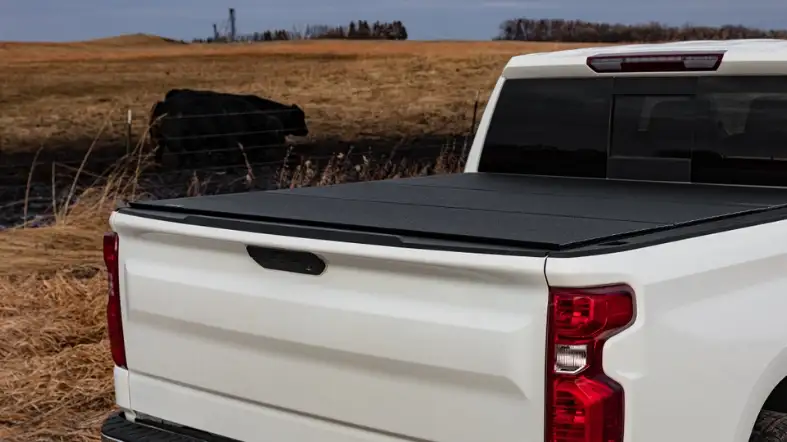Struggling with your Lomax Tonneau cover? Wondering if others face the same issues?
Discover the 12 most common Lomax Tonneau cover problems that truck owners encounter.
From water leakage to weak lock systems, these challenges can be frustrating. But fret not!
In this article, we’ll uncover practical solutions to help you overcome these problems and enjoy a seamless truck bed cover experience.

Common Lomax Tonneau Cover Problems and Solutions
Problem 1: Poor Fitting on the Truck Bed
One of the most common issues reported by Lomax Tonneau cover users is poor fitting on the truck bed.
This can result in gaps and misalignment, compromising the cover’s effectiveness and aesthetic appeal.
Solution
To address this problem, it is essential to ensure proper installation.
Start by carefully following the manufacturer’s instructions and guidelines.
Take the time to align the cover correctly and securely fasten it to the truck bed using the provided hardware. If necessary, consider consulting a professional for assistance.
Problem 2: Water Leaking into the Truck Bed
Water leakage is a frustrating problem that can damage cargo and create a messy situation.
It commonly occurs during heavy rain or car washes, compromising the cover’s ability to keep the truck bed dry.
Solution
To prevent water leakage, start by inspecting the cover for any gaps or damaged weather seals.
Replace any worn-out or damaged seals with new ones specifically designed for your Lomax Tonneau cover model.

Additionally, ensure that the cover is properly latched and secure all fasteners to create a tight seal. Consider using a tailgate seal to further enhance water resistance.
Problem 3: Weak Lock System
A weak lock system can lead to security concerns, as it may allow unauthorized access to the truck bed.
Users have reported issues with the lock’s durability and effectiveness over time.
Solution
If you’re experiencing problems with the lock system, it’s crucial to first inspect the lock mechanism for any signs of damage or wear.
Lubricate the lock and hinges regularly to ensure smooth operation.
If the lock is significantly compromised, consider contacting the manufacturer’s customer support for assistance or exploring the possibility of replacing the lock mechanism with a more robust alternative.
Problem 4: Latch Grip Loosens with Time
Over time, the latch grip on the Lomax Tonneau cover may become loose, resulting in difficulty opening and closing the cover securely.
This can be frustrating and compromise the cover’s functionality.
Solution
To address this issue, periodically check and tighten the latch grip as needed. Use the appropriate tools to ensure a secure fit.
Additionally, inspect the latch mechanism for any signs of damage or wear.
If the latch grip continues to loosen despite tightening, consider contacting the manufacturer for further guidance or explore the possibility of replacing the latch mechanism.
Problem 5: Unable to Withstand Heavy Loads
Some users have experienced difficulties with their Lomax Tonneau covers when it comes to handling heavy loads.
The cover may sag or become damaged under excessive weight, limiting its practicality.
Solution
To avoid this issue, it is essential to follow the manufacturer’s guidelines regarding weight limits.
Ensure that you do not exceed the recommended load capacity of your specific Lomax Tonneau cover model.
Distribute the weight evenly and consider using additional support, such as load bars or bed extenders, when carrying heavy items.
Regularly inspect the cover for any signs of sagging or stress and address them promptly to prevent further damage.
Problem 6: Squeaky Noises
Squeaky noises coming from the Lomax Tonneau cover while driving can be annoying and indicate potential issues with the cover’s components or installation.
Solution
To eliminate or reduce squeaky noises, begin by checking all the fasteners and hardware for tightness.
Apply a suitable lubricant to the hinges, latches, and other moving parts as recommended by the manufacturer.
Regular maintenance and lubrication can significantly reduce squeaks and ensure smooth operation.
Problem 7: Loosening of Latch and Nuts on Rough Tracks
Driving on rough tracks or uneven terrain can cause the latch and nuts of the Lomax Tonneau cover to loosen over time.
This can result in a loose and unstable cover, compromising its functionality and security.
Solution
To address this issue, it is recommended to regularly inspect and tighten the latch and nuts.
Use the appropriate tools to ensure a secure fit. Consider adding lock washers or thread-locking adhesive to provide extra stability and prevent loosening.
Additionally, avoid excessive off-road driving or adjust your driving style to minimize the impact on the cover.
Problem 8: Difficulty in Removing Hinged Fiberglass Models
Some users have encountered difficulties when trying to remove hinged fiberglass models of the Lomax Tonneau cover.
This can be a frustrating experience, especially when you need to access the full truck bed.
Solution
To facilitate the removal process, it is important to follow the manufacturer’s instructions for removing the hinged fiberglass cover.
Some models may require the removal of specific components or the use of specialized tools.
Take your time to carefully disengage the cover from the mounting points, ensuring that all latches and hinges are released properly.
Seek assistance or consult the manufacturer if you encounter any challenges during the removal process.
Problem 9: Sun UV Rays Can Cause Fade and Crack
Exposure to the sun’s UV rays can lead to fading and cracking of the Lomax Tonneau cover’s surface.
This not only affects the appearance but can also compromise its durability over time.
Solution
To protect your cover from sun damage, consider using a UV-resistant cover or protective spray.
Regularly clean and apply a UV protectant specifically designed for the material of your Lomax Tonneau cover.
Whenever possible, park your vehicle in shaded areas or use a carport or garage to shield the cover from direct sunlight.
Proper maintenance and protection will help prolong the life of your cover and maintain its appearance.
Problem 10: Rusting
Rusting is a common issue, particularly for metal components of the Lomax Tonneau cover.
Exposure to moisture and corrosive elements can lead to rust formation, compromising the cover’s integrity and aesthetics.
Solution
To prevent rusting, it is crucial to maintain a clean and dry environment for your Lomax Tonneau cover.
Regularly inspect the cover for any signs of rust or corrosion. Promptly remove any accumulated dirt or debris and dry the cover thoroughly.
Consider applying a rust-inhibiting spray or coating to metal components as an additional protective measure.
If you notice significant rusting, consult a professional or contact the manufacturer for guidance on how to address the issue effectively.
Problem 11: Issues with the Folding Mechanism

Some users have encountered problems with the folding mechanism of their Lomax Tonneau cover.
The folding panels may not fold smoothly or lock securely, hindering the cover’s functionality and ease of use.
Solution
To address issues with the folding mechanism, start by inspecting the hinges and pivot points for any signs of damage or obstruction.
Ensure that all fasteners are properly tightened and that the folding panels are aligned correctly.
Lubricate the hinges and moving parts with a suitable lubricant to promote smooth folding and unfolding.
If the problem persists, contact the manufacturer’s customer support for guidance or explore the possibility of replacing any faulty components.
Problem 12: Lack of Durability and Customer Support
Some users have expressed concerns about the overall durability of the Lomax Tonneau cover and reported difficulties with customer support when addressing issues or seeking assistance.
Solution
To ensure durability, choose a reputable brand known for producing high-quality and reliable truck bed covers.
Read customer reviews and seek recommendations from trusted sources. If you encounter any problems or have questions, promptly reach out to the manufacturer’s customer support.
Clearly communicate your concerns and provide any necessary documentation or evidence.
Persistence and clear communication can help resolve issues and ensure a satisfactory resolution.
Maintenance Tips to Avoid Lomax Tonneau Cover Problems
By following these maintenance tips, you can keep your Lomax Tonneau cover in good condition and avoid common problems:
Regular Inspection of the Lomax Tonneau Cover
To avoid problems with your Lomax Tonneau cover, you should conduct regular inspections.
Look for signs of wear and tear, such as scratches or dents in the aluminum material. Also, check the seals for any damage or signs of wear.
If you notice any issues during your inspection, take the necessary steps to address them.
This might involve replacing worn-out parts or applying a repair kit to fix minor scratches or dents.
Proper Installation of the Lomax Tonneau Cover
Proper installation plays a crucial role in preventing issues with your Lomax Tonneau cover.
If you install the cover correctly, you can avoid problems such as water leakage and difficulty in latching. Make sure to follow the manufacturer’s installation guide closely.
If you’re unsure about any step, don’t hesitate to seek help from a professional.
A correctly installed cover aligns perfectly with your truck bed and has properly installed seals to prevent water leakage.
Regular Lubrication of the Folding Mechanism
The folding mechanism of your Lomax Tonneau cover needs regular lubrication to function smoothly.
If you neglect this, the cover might not fold properly or stay in place when folded.
Use a suitable lubricant and apply it to the hinges and the folding mechanism. Regular lubrication not only ensures smooth operation but also extends the lifespan of these parts.
Careful Use of the Lomax Tonneau Cover
Lastly, careful use of your Lomax Tonneau cover can prevent many problems. The cover’s material, although durable, can get scratched or dented if you’re not careful.
When loading and unloading items from your truck bed, make sure not to scrape or hit the cover.
Also, avoid placing heavy items on the cover, as this can cause it to warp or dent.
How to Troubleshoot Lomax Tonneau Cover Issues

By following these troubleshooting steps, you can resolve common issues with your Lomax Tonneau cover:
Identifying the Issue with Your Lomax Tonneau Cover
The first step in troubleshooting Lomax Tonneau cover issues is to identify the problem.
You might notice water leakage, difficulty in latching, issues with the folding mechanism, or damage to the cover’s material.
Once you’ve identified the issue, you can take the appropriate steps to resolve it.
Troubleshooting Water Leakage
If you’re dealing with water leakage, start by inspecting the seals. Look for any signs of wear or damage.
If you find any, you’ll need to replace the seals. If the seals are intact, the problem might be due to improper installation.
In this case, refer back to the installation guide and ensure that you’ve followed each step correctly.
If you’ve checked the seals and the installation and you’re still experiencing water leakage, consider seeking help from a professional.
Resolving Issues with Latching
If your Lomax Tonneau cover isn’t latching properly, first check the alignment of the cover. If it’s not aligned correctly with your truck bed, adjust it until it is.
If the alignment isn’t the issue, inspect the latching mechanism. Look for any signs of damage or wear. If you find any, you’ll need to replace the latching mechanism.
Fixing Problems with the Folding Mechanism
If you’re having trouble with the folding mechanism of your Lomax Tonneau cover, start by inspecting the hinges and the folding mechanism.
If you notice any signs of damage or wear, you’ll need to replace these parts.
If the parts seem fine, the problem might be due to a lack of lubrication. In this case, apply a suitable lubricant to the hinges and the folding mechanism.
Repairing Damage to the Cover’s Material
If your Lomax Tonneau cover has scratches or dents, you might be able to fix minor damage with a repair kit.
For major damage, you might need to replace the cover. To prevent future damage, be careful when loading and unloading items from your truck bed, and avoid placing heavy items on the cover.
What Are Some Common Problems with the Weathertech Tonneau Cover Made by Lomax?
The lomax and weathertech tonneau cover may encounter a few common problems. Firstly, some users report difficulty with the installation process, requiring additional tools and time. Secondly, the cover’s clamps can sometimes come loose, resulting in a loose fit and potential water leakage. Lastly, a few customers have experienced issues with the cover’s durability, noting premature wear and tear.
FAQs
Why Is My Lomax Tonneau Cover Leaking?
Leaks can occur if the cover isn’t properly installed or if the seals have worn out.
It’s recommended to check the installation and replace the seals if necessary.
How Can I Fix The Difficulty In Opening And Closing My Lomax Tonneau Cover?
This could be due to dirt or debris in the tracks. Regular cleaning and lubrication can help solve this problem.
Can I Replace The Seals On My Lomax Tonneau Cover If They Are Worn Out?
Yes, replacement seals are available and can be replaced to prevent water leakage.
Final Words
From poor fitting and water leakage to weak locks and rusting, you can take charge of these issues.
Tighten latches, use weather seals, apply UV protectant, and maintain regular upkeep to prevent fading and cracking.
Don’t let these challenges deter you – with proper installation, maintenance, and smart solutions, you can enjoy a durable and reliable Lomax Tonneau cover that enhances your truck’s functionality and style.
